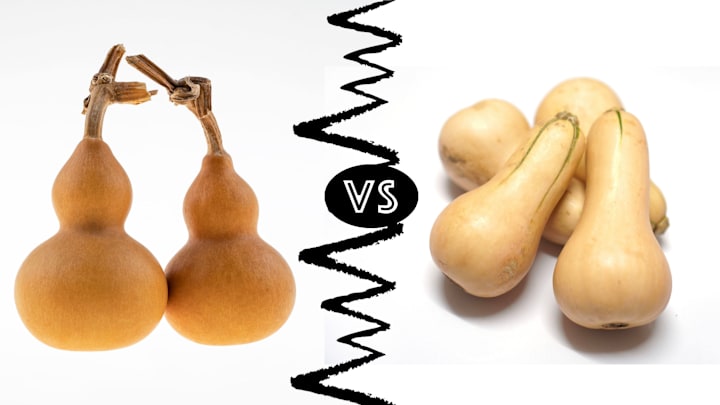As temperatures shift during fall, so do many people’s appetites. Varieties of squash—including kabocha, butternut, and acorn—appear in hearty dishes associated with the season. Gourds may be displayed on the kitchen table this time of year, but unlike their botanical brethren, they should never be cooked. Edibility—or lack thereof—is the key difference setting squash and gourds apart.
Gourds and squash share many similarities. They are both fruits belonging to the Cucurbitaceae family, which also counts cucumbers and watermelons among its 975-odd members. Gourds and squash can be broken down even further to the genus Cucurbita. The nutrient-rich category of crops covers practically all the woody-stemmed, tough-rinded, green or orange fruits available at pumpkin patches this time of year.
There is no scientific definition setting squash and gourds apart. Emilie Berner, chef instructor of plant-based culinary arts at the Institute of Culinary Education, distinguishes between them from a culinary standpoint. “The main difference is that [squash are] considered edible, and then [gourds are] considered inedible,” she tells Mental Floss. “How we differentiate the two largely just comes down to: does it taste good or does it not taste good?”
Many gourds are simply too tough to be edible. Dr. Joe Masabni, vegetable specialist at Texas A&M AgriLife Extension Service, told Martha Stewart, “Some gourds, like the daisy gourd, are not suitable for eating no matter how long you steam or boil it.”
But is it dangerous to eat a decorative gourd? It depends on the variety. Some gourds contain toxic compounds called cucurbitacins which can cause digestive pain, vomiting, severe dehydration, and diarrhea. Angel wings, apple gourds, and gooseneck gourds can all cause adverse health effects when consumed. Even certain squash grown in home gardens can become inedible via wild hybridization, in which a domesticated, edible plant and a wild, inedible plant cross-breed.
Differentiating between gourds and squash becomes more confusing when you add pumpkins to the mix. The label isn't scientific, and it can refer to any round and orange member of the genus Cucurbita. That means a pumpkin variety can either be a gourd or a squash depending on whether it was bred for decorative or culinary purposes.
In short, if you found your thick-skinned fruit in a seasonal display or got it straight from a pumpkin patch, it’s probably decorative. If you picked it up from the produce section of the supermarket or a farm stand, it’s good to eat. For culinary inspiration this fall, check out this recipe for roasted butternut squash soup or this one for soy-braised kabocha squash.
Read More About Plants:
